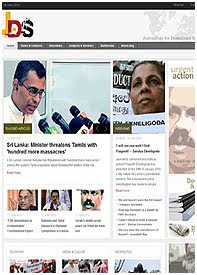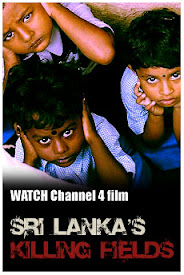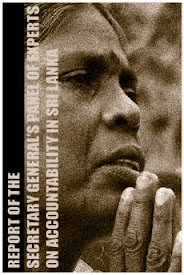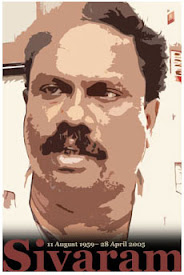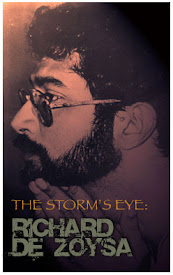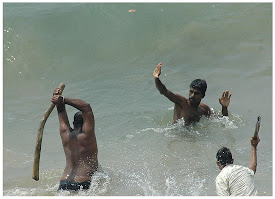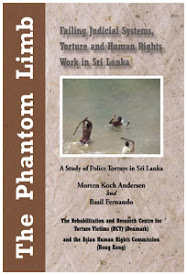
The Economist
.............................................................................................................................................................................................
Sri Lanka’s president since 2005, Mahinda Rajapaksa, is evidently giving the matter some thought. His government is already dominated by several Rajapaksa brothers, including a fierce one, Gotabaya, who oversees defence, and a more nimble-minded one, Basil, who runs economic policy. Now the 65 year-old president, who last month denied a rumour that he was being treated for cancer, is increasingly eager to promote his son, Namal Rajapaksa.
The 24-year-old MP is frequently taken on foreign trips by his father. In January he was dispatched to Libya to deliver a formal invitation for Muammar Qaddafi to visit Sri Lanka, to improve the “strong personal relationship” between the two country’s leaders.
At home excuses are rustled up to keep him in the limelight. Last month he dispensed the man-of-the-match award at Sri Lanka’s opening game of the cricket world cup, which took place in a newly built stadium in—by happy coincidence—his own constituency, Hambantota, in the south of the country. A few days earlier the portly young politician had been shown laying a foundation stone for a new office complex, funded by the Asian Development Bank; just before that he was named chairman of a new fund to protect a forest and an ancient pink quartz mountain range, the National Namal Uyana.
He is on hand to inaugurate new bridges and roads. As the head of a national body, Tharunyata Hetak (“aspiring youth”), he is whisked north—a chopper is usually on call—to dish out cash, books and other aid to victims of the civil war. His group has its own television channel, which shows him doing the dishing. He enjoys fawning—sorry, perceptive—coverage from state press and broadcasters.
His year-long political career has been charmed. His constituency, a Rajapaksa family stronghold since the 1930s, has been chosen as the site of a new international airport, a conference centre, hotels and other big projects. In November he officiated with his father at the opening of a large, Chinese-built harbour in Hambantota. Now young Mr Rajapaksa, charming, London-educated and fond of rugby, is leading a bid for Hambantota to host the 2018 Commonwealth games.
A presidential change will not happen overnight. Mr Rajapaksa père remains popular among the Sinhalese majority for helping to force a decisive, brutal end to a civil war two years ago. He won a thumping re-election last year and has since pushed through constitutional changes that give him more clout and let him seek a third term, probably at an election in 2016. But preparing the son looks to be a form of insurance policy.
The opposition is hoping for a ruling family feud, as the son vies with his uncle to be heir-apparent (Basil had previously been touted as a successor). But Namal’s promotion may suit the whole family. It must fend off accusations that thousands of Tamil Tiger opponents and civilians were massacred at the dreadful climax of the war. Frequent foreign demands for an inquiry, and an attempt by the United Nations to launch one, have soured Western relations with Sri Lanka.
Patching up foreign ties and reconciliation with the aggrieved Tamils are the most important tasks facing Sri Lanka’s rulers. These are much harder while Mahinda remains the face of government. If the Rajapaksas want a dynasty preserved for many years, preparing the way for a young insider, untainted by any role in the war, could be the family’s canniest strategy.
© The Economist
Friday, March 18, 2011
Sri Lanka: The son also rises
Friday, March 18, 2011
Global Energy eyeing refinery deal in Sri Lanka's Hambantota
By Santhush Fernando | The Bottom Line
.............................................................................................................................................................................................
The refinery estimated to cost between US $ 1.5 to 2bn (Rs.166.5 to 222bn), is said to be thrice the size of the current state-run Sapugaskanda Refinery and will mainly refine crude oil for the export market, with Hambantota poised to become a mega global hub in energy, shipping and aviation.
Petroleum Corporation and a current director of Chevron Lubricants Lanka Plc is the local coordinator for the project while a former DGM of CPC and a Geology professor of University of Peradeniya is also involved in the project. Already they have 24 employees with them,” a high ranking official of the Ministry of Petroleum Industry told The Bottom Line.
However, he added that it was unfortunate that the line ministry was not kept informed that a MoU on a petroleum industry-related project was signed.
“No one knows which government institution has signed this MoU. The Ministry Secretary Titus Jayawardene was not aware of these developments. How can the ministry take a proper decision on whether to go ahead with the US $ 2.2bn Sapugaskanda Project if it is not aware of the private project! The Ministry or the CPC cannot gamble with funds because these are public moneys which the country must repay later on. If the private refinery is coming up, it is good because we may not have to find a staggering amount such as Rs. 244.2bn (US $ 2.2bn),” he lamented.
Numerous energy experts and think tanks have time and again emphasised the need to have a refinery in Hambantota if the country was to emerge as a global player in the energy industry.
“Various parties have applied for refineries in Hambantota. South Korea, ETA Ascon of Dubai and Petrochina subsidiary - China HuanQiu Contracting and Engineering Corporation that built the Muthurajawela tank farm, are among them. But Global Energy is said to have been eying this since 2000 and had also concluded a preliminary feasibility study. They seem to be very serious about the refinery project,” he added.
Meanwhile The Bottom Line exclusively reported last week that a high-powered government delegation was scheduled to visit Iran, in a bid to revive the Rs. 244bn Sapugaskanda Oil Refinery Expansion and Modernisation (SOREM) project that has been in the limbo since 2007 and to appeal Iranian authorities to extend repayment period up to twenty years.
In 2007, The Nation exclusively reported that UAE-based ETA Aston Group was planning to invest US 1.2bn in mega oil refinery in Hambantota, and had also identified a 400 acres of Mahaweli land in Mirrijjawila.
Last year, Petroleum Industries Minister Susil Premajayantha announced that he had received a proposal from Petrochina subsidiary - China Huanqiu Contracting and Engineering Corp to set up a refinery in the Hambantota district targeting the export market. Petrochina or China National Petroleum Corporation (CNPC) is China’s largest oil and gas producer and supplier, as well as one of the world’s major oilfield service providers and a globally reputed contractor in engineering construction, with a presence in nearly 70 countries.
© The Bottom Line
Friday, March 18, 2011
Sri Lanka: Alongside the A9 highway to war-torn Jaffna

Photo courtesy: Shantan Kumarasamy | WSWS
World Socialist Web Site
.............................................................................................................................................................................................
The images were taken by photojournalist Shantan Kumarasamy during a recent journey along the A9 highway, which connects the rest of the island with the Jaffna Peninsula. The photographs record the landscape from Omantai, in the Vanni, to Chunnakam, a suburban settlement in Jaffna.
Following the last phase of the war, over 284,000 people from the Vanni who survived the bloody front-line conflict were incarcerated in military-run camps, such as the infamous Menik Farm. Over 25,000 people remain incarcerated in Manik Farm while the remainder have been “resettled” to their towns and villages, or with relatives.
Due to the heavy fighting, shelling and aerial bombardment, few permanent structures exist in the so-called “resettled areas” of Kilinochchi, Mannar and Mullaitivu districts. Those who were “resettled” were given plastic sheeting for housing, along with a few other household items, and promised 25,000 rupees ($US225)—5,000 rupees of this in cash and the rest to be deposited in a bank account.
Another 60,000 people in Sri Lanka’s North and East, some of them living in temporary shelters since the early 1980s, remain “displaced” because their homes and businesses were taken over by the military to create official and unofficial High Security Zones.
Eighteen months after the end of the war, there are about 40,000 army officers and soldiers in the Jaffna Peninsula, a ratio of approximately 1:11 of military personnel to civilians. In the Vanni region, the ratio is about 1: 4. According to some estimates, almost 147,000 civilians are missing from the Vanni.
Click here to access the slide show.
© WSWS
Friday, March 18, 2011
Sri Lanka local polls swept by ruling party
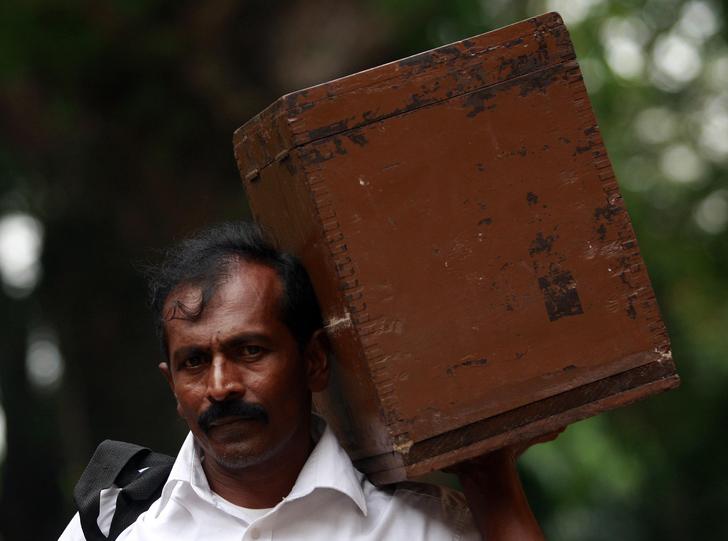
Lanka Business Online
.............................................................................................................................................................................................
The main opposition was trailing in third place by mid morning Friday, with results in 234 local bodies being declared. The UPFA has won 205, Tamil National Alliance going by the acronym ITAK, which contests mainly in the north and the east 12, Sri Lanka Muslim Congress 04, Up Country Peoples Front 01.
The Marxist-Nationalist Janatha Vimukthi Peramuna, a former coalition ally which later backed defeated presidential candidate Sarath Fonseka failed to win a single local body.
It lost Tissamharama Pradeshiya Sabha, deep in president Rajapaksa's home constituency in Hambantota in the south of the country.
Elections in some areas were postponed after prospective candidates whose lists were rejected by the election went to court. Polls in Colombo city, a traditional opposition stronghold, were also not held.
In the areas that elections were held, the UPFA had polled around 55 percent, the UNP 33 percent and the JVP and other parties collectively about 8.0 percent.
The ruling coalition is riding high on a war victory in 2009 and strong economic growth in 2010 though inflation has been rising and food prices have been generally high due to protectionist agricultural policy.
The elections was marred by at least one death following clashes between supporters of the ruling coalition and voter turnout was low by Sri Lankan standards of around 50 percent according to reports.
© LBO
This site is best viewed with firefox

Search
Is this evidence of 'war crimes' in Sri Lanka?
Archive
- ► 2010 (1312)
- ▼ 2011 (687)
Links
- Reporters Sans Frontières
- Media Legal Defence Initiative
- International Press Institute
- International News Safety Institute
- International Media Support
- International Freedom of Expression eXchange
- International Federation of Journalists
- Committee to Protect Journalists
- Asian Human Rights Commission
- Amnesty International

